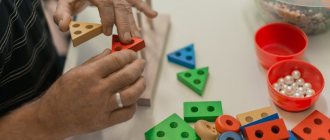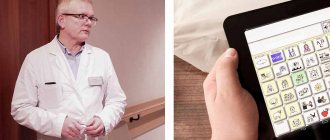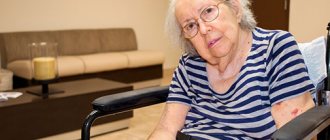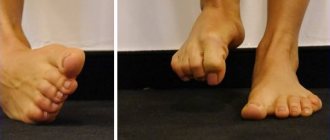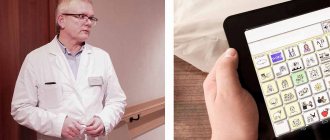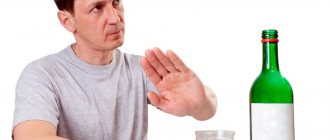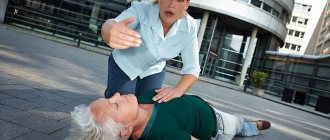Unfortunately, in our time, strokes occur too often. Modern medicine has effective treatment methods that save people from death. But what to do then, after salvation? Life after a stroke changes in significant ways. Some people remain disabled until the end of their days, while others make attempts to restore lost functions. This mainly refers to disturbances in movement, memory, and speech. If a small area of the brain is damaged, a person returns to normal life faster; significant improvements can be observed after a few weeks. In any case, a lot of effort must be made to ensure that the rehabilitation period is effective. It is important to adhere to the main principle: never give up and systematically train your speech and body. In this case, it is not necessary to be in hospital treatment. All workouts can be done at home. Moreover, houses and walls help.
According to statistics, 5-6% of people who have had a stroke need constant care. But everyone has a chance for a quick and full recovery.
Why don’t people want to recover after a stroke?
The success of rehabilitation depends on the patient’s mood. People who have had a stroke may seem indifferent to their health. Very often they become irritable, aggressive, and whiny. They follow the doctor’s recommendations without much desire and prefer to lie down and watch TV. But with this approach there is no hope for a quick recovery. Relatives and friends need to muster all their will in order to successfully overcome the consequences of the disease. For some, it is enough to understand that the patient’s whims are not the result of laziness or bad character, but a consequence of damage to certain areas of the brain. Therefore, the primary task of loved ones is to help patients overcome their reluctance to exercise.
The rehabilitation period can last a long time, so both the patient and his family need to be patient. The effectiveness of the procedures depends on their systematicity and high-quality implementation.
Alexey Yanin - stroke at 32
Despite the fact that Alexey Yanin suffered a stroke five years ago, he still has not been able to fully recover. Currently, the actor lives with his mother Olga Andreevna , who takes care of him and does everything to somehow improve her son’s condition, because after the hospital Yanin had to learn basic things. This is what Olga Andreevna said about Alexey’s successes several years ago: “...We began to talk better, Lesha drinks from a cup himself, eats with a spoon (he used to eat through a gastrostomy tube), brushes his teeth and combs his hair himself. Alyosha's right hand works well. He sits with minimal support. He stands on the verticalizer, turns over, makes a small bridge, and in general he is much more lively and quicker in his reactions. Alyosha has retained his intellect and memory. It can be very interesting with him. In general, we are slowly but surely moving forward. Soon we will learn to stand up...” the woman shared her plans. Over the course of several years, Alexey eventually coped with this task, he gets to his feet, can smile and even compliments his beloved mother. “He can tell me pleasant, affectionate words. Sometimes he strokes me and hugs me. This is worth a lot,” tele.ru quotes Olga Andreevna as saying about her son.
Alexey Yanin, Still from the film “Love Blooms in Spring” (2014)
Alas, there can no longer be any talk of returning to his beloved profession, which once made Yanin famous. Serious changes also occurred in the actor’s personal life after the stroke; his wife, singer Daria Klyushnikova , together with their common son Andrei, lives separately from her husband, but tries to visit Alexei as often as possible.
Rehabilitation program and its features
Recovery after a stroke is facilitated by a whole range of different activities:
- professional massage and special physical education;
- work to restore memory and speech;
- psychological and social assistance;
- prevention of possible complications that occur after a stroke.
According to the recommendations of doctors, the patient should be treated 1-2 times a day, provided he is in good health. To perform certain physical exercises and exercises aimed at restoring memory and speech, 35-40 minutes of exercise is sufficient. What to do if a person feels weak, has shortness of breath, dizziness, or high blood pressure? You don't have to give up classes altogether. It is enough to reduce them to 10-15 minutes.
Try to add variety to your workouts more often. If the patient is already getting up and moving around, encourage him to walk on grass, sand, stones and other uneven surfaces. After a while, you can move on to climbing a hill or even climbing stairs. The main thing is not to rush things. For walking, you should choose orthopedic shoes or high boots, in which the foot is well supported.
Every day, teach your loved one something new: hold a spoon, fasten a zipper, put on shoes, turn a faucet on and off, answer a phone call, and so on. It is very important to help him. But you shouldn't try to do the work for him if you don't want to interfere with the recovery process.
Important point! The rehabilitation period should take place in a calm atmosphere. Therefore, be patient and do not get nervous when a person tries to do something on their own. Spilled water? Broke a plate? No problem, solve the problem with a smile and continue learning. It is vital for people who have suffered a stroke to feel needed. Therefore, you can safely involve them in doing simple housework.
Features of motor function recovery after stroke
Movement disorders are rightfully considered one of the terrible consequences of a stroke. They are expressed in partial or complete immobilization of the legs and arms.
Among the main methods used to restore motor functions are:
- electrical stimulation is a physiotherapeutic method based on the effect of pulsed electric current on the body;
- therapeutic physical culture (physical therapy);
- massage;
- biofeedback is a method, the essence of which is to “return” the values of physiological indicators to patients (information is displayed on a computer screen).
The ideal solution is to combine several methods. With any approach, there is no need to tire the patient with lengthy procedures or intense training. The load should be increased gradually.
A little remodeling of the apartment wouldn't hurt. Specially equipped handrails, as well as chairs for support, will make life easier for the patient.
Alexey Vorobyov - stroke at 25
The artist suffered a stroke in 2013, when he was only 25 years old. This happened after an accident in America, in which a young man got into while riding in the passenger seat in a friend’s car. Vorobyov himself reconstructed the course of events from the girl’s words: “I don’t remember anything. As she later told me, there was a small accident, I hit my head and never woke up, she tried to wake me up. <...> In the hospital only two days later they diagnosed me with a stroke, before that they thought that I just hit myself.” After Alexey came to his senses, he could not talk; the entire left side of the artist’s body was paralyzed.
Alexey Vorobyov: “I wanted to stop and find love” Read more
The doctors' forecasts were pessimistic; they warned the singer that he might never be able to return to his profession. In public, Vorobyov tried to keep his face, but as soon as he was left alone with himself, his optimism immediately disappeared. “I cried... Yes, I was very much invigorated and was sure that I would wake up one day and everything would be fine, I would be able to walk normally and do everything I did before. And yet it seemed to me that what was happening could not be real,” the artist recalled in the program “Live Healthy!”
Alexey tried to cope with the terrible consequences of the stroke not only with the help of specialists, but also on his own. “I developed fine motor skills, doing what little children do. I had a very tiny construction set, and with my paralyzed hand I tried to take the parts and insert one into the other. Naturally, everything just fell out of hand,” the singer told Elena Malysheva .
Fortunately, the young man recovered quickly, which surprised his attending physician. “My doctor, who treated me in the States, had only two cases in many years of practice when the patient’s recovery occurred so quickly, and I was this second case. He can hardly explain it,” says Vorobiev.
Article on the topic
After a stroke. Artists whose careers were interrupted by serious illness
What medical methods exist
An integrated approach is important in the treatment of patients after a stroke. Modern medicine has developed several rehabilitation methods.
- Drug therapy. It is required to expand the lumen in blood vessels and improve blood circulation. Treatment can be prescribed in courses or on an ongoing basis.
- Therapeutic exercise is the main assistant in restoring motor activity and the ability to return to a full life. A physical therapy specialist conducts individual sessions, during which the duration of the program is determined. In this way, you can speed up the rehabilitation process as a whole, but the exercises should also be performed at home.
- Massage. They try to administer it as early as possible, as far as the patient’s health allows. The duration of the massage is increased gradually, the program includes at least 20-30 sessions performed daily or every other day. After which you need a break of 1.5-2 months, and then the resumption of massage procedures.
- Physical therapy is one of the main medical practices in rehabilitation after stroke. In the absence of contraindications, treatment begins within 2-3 weeks. The number of procedures and their frequency can be determined by a specialist, based on individual indications. This often includes magnetic and manual therapy, SMT, therapy with paraffin, sand, steam, therapeutic mud, and electrophoresis.
A competent approach to treatment procedures leads to a greater likelihood of the patient returning to normal life in the end.
Symptoms
The term “stroke” in medical practice refers to a pathology in which there is a circulatory disorder in any part of the brain. After an attack, certain brain structures are damaged, causing the person to lose (partially or completely) certain skills. There are two types of this pathology:
- ischemic stroke - a circulatory disorder due to partial or complete blockage of a vessel;
- hemorrhagic stroke is a violation of the integrity of a vessel with subsequent hemorrhage in the brain.
Clinical manifestations of the pathology vary depending on which part of the brain was affected (left or right side, specific area), as well as the severity of the “impact” (the extent of damage to brain tissue). In most cases, rehabilitation after a hemorrhagic stroke is longer and more complex, since the nature of the lesions is more severe.
Who is at risk?
There is an opinion among the population that a stroke is like a fatal blow. It occurs suddenly and, at best, leaves a mark that lasts a lifetime; at worst, it leads to death. However, this is not true.
Doctors name a number of reasons that increase the likelihood of acute cerebrovascular accident:
- hypertension;
- diabetes;
- sedentary lifestyle;
- obesity;
- abuse of salt and animal fats;
- smoking.
There are tests that allow early symptoms of cerebrovascular accident to predict the development of acute pathology in advance:
- headache without specific localization due to overwork;
- insomnia or constant drowsiness;
- noise in ears;
- frequent dizziness;
- short-term memory loss, when a person does not remember what happened an hour ago, yesterday.
All these symptoms indicate that you need to see a doctor. The specialist will give recommendations and prescribe an examination - send you for magnetic resonance imaging. This most highly informative and sensitive diagnostic procedure is painless and safe. It allows you to create a 3D model of blood flow, visualize vessels, assess their condition and see adjacent tissues. At the same time, the cost of an MRI of the brain cannot be compared with the cost of treating a stroke!
Rehabilitation plan
In our stroke recovery center, an individual rehabilitation plan is developed for each patient.
It takes into account the degree of brain damage, the patient’s age, type of stroke, etc. The best specialists are working to create a plan, studying in detail the medical history, the patient’s life, and recording lost abilities. Thus, after an ischemic stroke of the brain, rehabilitation can be radically different for 2, 3, 5 or more patients. This is explained by the fact that the characteristics of the lesion are different in each case and must be taken into account when creating a plan.
Dietary supplements inexpensively
When a loved one has a stroke, the only thing their family members want is for the treatment to be effective and for the loved one to survive. When medical attention is sought early, the prognosis is good and the family's prayers are usually answered.
But time passes, and the family notices that the patient has changed a lot. He reacts differently to everything, may demonstrate various “oddities” in behavior, and communication with him sometimes becomes completely unbearable.
Free consultation right now!
Online consultation with a specialist on your issue!
License number: LO-77-01-019036
What to do in this case, and is there any hope for the return of the “former” father, mother, brother?
Stroke treatment
The promptness and correctness of treatment carried out after an attack directly affects the success and timing of rehabilitation, as well as life after a stroke in general. It doesn’t matter whether the stroke occurred on the left or right side, the type of pathology plays a role in treatment:
- Ischemic - all actions are aimed at restoring blood circulation and eliminating the causes of vascular obstruction. To do this, medications that thin the blood, dissolve blood clots are used, or non-invasive methods are used to destroy blood clots.
- Hemorrhagic - first of all, it is necessary to stop the hemorrhage with medication. The resulting blood clot is then surgically removed, and aspiration may be used.
What to do if you or someone close to you has a stroke?
It is important to quickly call an ambulance, diagnose the pathology and receive qualified medical care. The patient and doctors have only 4.5 hours for this. After this time, the risk of irreversible consequences and death increases sharply.
Therefore, it is important not to give the victim any medications (heart, blood pressure), take him to the nearest clinic and do an MRI of the brain. If previously the diagnosis was made mainly “by eye” and treatment was prescribed “finger in the sky”, then the advent of tomography has radically changed the situation. Now the doctor can immediately visualize the pathology, determine the location of the hemorrhage, assess the scale of the problem and provide emergency assistance (start thrombolytic therapy).
Just facts and figures
- Russia ranks 2nd in the world in terms of the number of strokes. Bulgaria is in first place, China is in third.
- In Moscow alone, 80–120 people have a stroke every day.
- Many today call stroke the disease of the century. This is no coincidence, since stroke is the third leading cause of death in most developed countries, as well as the leading cause of disability. In Russia, 450 thousand cases of this disease are registered annually, approximately 35% of patients die in the acute period.
- Up to 30% of patients with acute cerebrovascular accident are people of working age who have not reached 50 years of age.
- Every fifth ischemic stroke occurs due to atrial fibrillation.
- The main cause of stroke is inattention to one's health.
- The greatest number of strokes occurs during the cold season. For people in the older age group, a decrease in air temperature of 1°C increases the risk of developing cerebrovascular accident by almost 4%. This is due to an increase in blood pressure, compression of the lumens of blood vessels, thickening of the blood and difficulty pumping it through the heart, which occurs during cold weather.
- Off-season: late autumn and early spring - peak incidence. At this time of year, people often do not notice the increase in blood pressure and do not take any measures to resolve it. And arterial hypertension, as is known, is one of the main risk factors for ischemic stroke.
- Most often, ischemic stroke occurs at night and in the early morning hours.
The most famous stroke victims
- Christoph Willibald Gluck , Austrian composer. After the premiere of his last opera, the composer suffered a stroke. Two years later, another one happened, which could not but affect the ability to work. The composer died in 1787.
- Modest Mussorgsky (great Russian composer). At the age of 42, on the street there was an attack of loss of consciousness, accompanied by convulsions. He was taken to the hospital, where he lived for several days.
- Stendhal. Famous French writer, whose life was cut short by a stroke at the age of 59. 2 years before his death, he already had an episode of speech impairment and weakness of his right hand. But the writer recovered from this disorder in brain function. Modern experts would say that Stendhal had an episode of transient ischemic attack. Two years later, everything happened again: a new attack suddenly occurred on the street, and the writer died without regaining consciousness.
- Walter Scott. Famous English novelist. As a result of his first apoplexy in 1830, his right arm was paralyzed, followed by two more strokes. On September 21, 1832 he died.
- Charles Dickens is a 58-year-old English writer. One day, after performing on the theater stage, he felt unwell and had a speech disorder that lasted for 15 minutes. It would seem that everything went away, but 2 months later during a rehearsal it all happened again. And after another 3 weeks, during lunch, Dickens fell unconscious, he developed paralysis, convulsions, and the next day he was gone.
- Federico Fellini is an Italian film director whose work defined the face of European cinema in the second half of the twentieth century. In March 1993, the director received an Oscar for his contribution to cinema, but on October 15, Fellini was hospitalized with a stroke. On October 31, the film director died.
- Andrey Mironov. The actor lived only 46 years. During the performance, he suddenly stopped talking and began to sink to the floor. When Andrei was taken to the hospital, it turned out that he had a brain hemorrhage. For two days, doctors fought for the actor’s life, but on August 16, death occurred.
- Vitaly Solomin. People's Artist of the RSFSR, known to television viewers for his many roles in films and on the theater stage. He was especially loved by everyone for his role as a friend and biographer of the legendary British detective in the television series “Sherlock Holmes and Dr. Watson.” The cause of Vitaly Solomin's death was a stroke.
As you can see, a stroke does not spare ranks or titles and, like any misfortune, it usually comes suddenly. This list can be continued endlessly. A huge number of people, not only famous ones, died precisely because of stroke. Therefore, value your life and be attentive to your health!
Who can have a stroke? At-risk groups
Sometimes diagnosing a stroke is possible even if the precipitating factors and underlying causes are completely absent from the patient’s life. In this case, the disease is possible only because the person is initially at risk.
Persons at risk:
- persons suffering from diabetes;
- patients who have been diagnosed with atheroclerosis (high cholesterol levels);
- apparently healthy people with a hereditary predisposition (stroke attacks were observed in close relatives) over 55 years of age;
- people who have bad habits, among which smoking, alcohol, and drugs come first;
- young people who smoke more than 15 cigarettes a day. This condition increases the risk of stroke by 60% in women and 40% in men;
- men are affected by stroke attacks twice as often as women; especially in the first hours after consuming alcoholic drinks;
- people exposed to constant stress;
- overweight persons;
- women over 50 years of age and men over 45 years of age;
- part of the population prone to self-medication;
- persons who avoid medical examinations and examinations by a doctor to assess their health;
- persons suffering from insomnia (insomnia);
- patients with hypertension (high blood pressure);
- persons with cardiovascular insufficiency and heart rhythm disturbances (arrhythmias);
- persons with blood diseases (leukemia) and a tendency to form blood clots;
- people with kidney and lung diseases;
- women using hormonal contraception;
- persons leading a sedentary lifestyle.
If two or more of the listed symptoms are observed at least once a week for at least three months, especially against the background of diseases such as hypertension and atherosclerosis, neglecting this is very, very dangerous!
Precursors of stroke
The imminent development of a stroke can be judged by signs of cerebrovascular accident identified by special tests. One such method is the Manvelov test:
If at least two of the following symptoms have recurred once a week or more frequently over the past three months, you should immediately consult a doctor:
- Headache that does not have a specific localization and occurs during fatigue or weather disasters.
- Dizziness that occurs at rest and worsens with movement.
- The presence of tinnitus, both permanent and transient.
- “Failures” of memory for events of the current period of time.
- Changes in work intensity and sleep disturbances.
All these symptoms should be considered as harbingers of the development of a stroke!
How to recognize the development of a stroke?
A person can recognize some signs of a stroke:
- sudden, almost unbearable headache that appears for no apparent reason;
- weakness, noted only in one - right or left - side of the body;
- impaired coordination (difficulty maintaining balance, altered gait);
- confusion (the victim has difficulty understanding where he is, what his name is, what date it is);
- difficulties in pronouncing words, even the simplest ones, misunderstanding their meaning;
- doubling effect in one or both eyes;
- signs of nausea or vomiting.
The listed symptoms often appear after a short period of fainting or loss of consciousness. If a person manages to notice two or more of the signs mentioned above, he should immediately seek medical help.
You can also resort to outside help (relatives or passers-by). To detect stroke symptoms by third parties, they need to ask the victim to complete three simple tasks:
- Smile so wide that you can see your teeth. As a rule, the person who has had an attack smiles unnaturally, very tensely. His smile is more like a grin, maybe slightly curved to one side.
- Raise both arms up and hold in this position for 10 seconds. A stroke victim usually experiences incredible muscle weakness, and it will be extremely difficult for him to hold his arms in this position. If he is unable to raise one of his arms at all, a stroke can be diagnosed almost accurately.
- Ask to repeat a simple combination of words or sentence. For example: “The sun came out this morning.” Even with such a simple task, the patient will cope with great difficulty.
Recommendations: Difficulty completing all the proposed tasks at once are clear signs of emergency hospitalization of the patient to the hospital! When calling an ambulance, you must immediately explain that you suspect a stroke! When calling an ambulance, you must clearly and clearly describe what happened over the phone. This will allow you to wait not for a general therapeutic team, but for a specialized neurological one, which will immediately provide the necessary assistance, both at home and on the way to the hospital. Before the doctors arrive, you need to place the victim’s head on a high pillow and unfasten his belt and shirt. For a woman, unfasten your bra. If a person has lost consciousness, turn his head to the side, take out his tongue and press it so that it does not sink. If the patient is feeling nauseous, turn his head to the side and place a tray or bowl under his lower jaw. This will prevent vomit from entering the respiratory tract. After vomiting stops, clear your mouth to prevent the patient from choking on pieces of food. Open the window to allow fresh air into the room.
The “therapeutic window” is the time during which it is necessary to restore blood flow in the artery after an ischemic stroke – 6 hours. For thrombolysis - a method in which drugs that dissolve a blood clot are administered intravenously - 3 hours.
Transportation of the victim should be carried out as carefully as possible, avoiding unnecessary shaking, which will provoke an increase in the area of the damaged areas zga.
“Female” stroke has atypical symptoms
Women are more likely than men to have a stroke, have a more severe stroke, and are almost twice as likely to die from the consequences. Along with general symptoms (severe headache, numbness of half the face, visual and speech disturbances), representatives of the fairer sex often experience atypical signs of cerebrovascular accident. Among them: severe, paroxysmal pain in one arm or leg; a sudden attack of hiccups; sharp pain in the abdomen; severe nausea; sudden weakness; loss of consciousness for a short time; sudden chest pain; suffocation; cardiopalmus; insomnia. Some experts associate the increased likelihood of stroke in women undergoing menopause, as well as with the effect of hormone replacement drugs prescribed to ease the symptoms of menopause.
Stroke Prevention
Lifestyle. General recommendations
Take care of prevention. Stroke can be prevented because most risk factors are controlled:
- Monitor your blood sugar levels if you have prediabetes or are already diagnosed with diabetes.
- Keep your blood pressure under control and take medications if you have arterial hypertension - (pressure above 140/90 mmHg). It has been proven that adequate treatment of hypertension can reduce the risk of stroke by 50% over 4 - 5 years.
- Pay attention to atrial fibrillation.
- Monitor your cholesterol levels and quit smoking.
- As neurologists admit, today stroke has been studied far and wide, but still one of its main causes is negative emotions and stress. Therefore, drive away bad emotions from yourself.
- Active walking—one and a half hours a day—significantly reduces the risk of stroke.
Blood pressure control
The main emphasis should be on the treatment of underlying diseases that can provoke damage to the blood vessels of the brain: diabetes, hypertension, heart failure, other diseases of the cardiovascular system, increased blood clotting. In this case, first of all, it is necessary to undergo regular examinations to keep the disease under control. You need to take pills to normalize your blood pressure. High blood pressure is the main cause of the development of this disease and therefore, to prevent stroke, it is necessary, first of all, to carefully monitor blood pressure readings. Not only too high rates, but also sudden jumps can be disastrous. Vessels lose their elasticity with age and therefore a sharp increase in blood pressure, even if not to critical levels, can lead to ruptures of the vessel walls.
Blood thinners may also often be needed. It is the increased blood clotting that provokes its more complex flow through the vessels, as well as the formation of blood clots, which may well be the root cause of a stroke.
In some cases, it may be necessary to take diuretics, which are able to remove excess fluid from the body and thereby help lower blood pressure.
With high blood pressure:
If you have already been diagnosed with hypertension, then it is better to avoid strenuous exercise. It is recommended to spend more time on:
- hiking, swimming;
- maintaining a sleep schedule;
- measures to avoid excessive stressful situations and worries;
- sufficient rest, do not overexert yourself;
- quitting smoking and abusing alcoholic beverages;
- active lifestyle. Moreover, everything will depend on the stage of hypertension, associated factors or the absence of them as such. If a person simply wants to prevent the development of problems with blood vessels, then he can easily lead a normal active lifestyle if there are no restrictions as such.
By changing your lifestyle and taking medications in a timely manner, the likelihood of a stroke can be reduced by 80%! Stroke tends to recur (and according to the same scenario). From 15 to 20% of patients suffer it a second time during the first year. Moreover, the second blow is always more dangerous and heavier than the previous one. Therefore it is necessary to observe:
- Quitting bad habits (smoking, alcohol, drugs, foods rich in fats and easily digestible carbohydrates, abuse of sugar and salt).
- Motivation for a healthy lifestyle (regular physical activity; nutrition with an emphasis on eating vegetables, lean meats and fish, fruits).
- Regular laboratory examinations, as prescribed by a doctor, should be performed at least once a year.
- Instrumental studies - ECG, ultrasound of extracranial and intracranial arteries of the brain, examination of the fundus by an ophthalmologist, MRI of the brain (if there has been a stroke before).
- Strict adherence to doctor's medication prescriptions for high blood pressure - taking antihypertensive drugs; for cardiac arrhythmia - antiarrhythmic drugs; for diabetes mellitus - hypoglycemic agents; if you have had a stroke, take antiplatelet and antiplatelet drugs.
- Constant blood pressure monitoring after 50-60 years, morning and evening. Decrease in blood pressure by 8 - 10 mm. rt. Art. in conditions of long-term use of antihypertensive drugs, it reduces the incidence of stroke by 2 times. This is especially important for patients with diabetes; their blood pressure should be close to normal (120/80 mm Hg), since the walls of blood vessels in this category of patients have increased fragility due to constant contact with blood rich in glucose.
Balanced diet
Key dietary points to follow:
- limit fluid intake. If stage 2 hypertension is diagnosed, then no more than 2 liters per day are allowed, including first courses;
- Minimize the amount of salt consumed. During the period of exacerbation or in the later stages of hypertension, no more than 2 grams are allowed, in other cases 5 grams. This is due to the fact that salt prevents the normal removal of fluid from the body, thereby causing swelling and increased blood pressure;
- increase consumption of vegetables and fruits;
- try to exclude quickly digestible carbohydrates from your diet. This applies to sweet foods, baked goods, and sugar. This diet contributes to the rapid development of obesity;
- eat only bread made from coarse varieties of wheat;
- eliminate or minimize the consumption of bitter, spicy, sour, smoked, fried foods;
- Minimize consumption of animal fats. It is especially worth limiting the consumption of chicken eggs, sour cream, butter - such products contribute to increased cholesterol levels in the blood, the formation of cholesterol plaques and, as a result, the development of atherosclerosis;
- increase the consumption of fermented milk products (kefir, yogurt);
- For drinks, herbal teas, compotes, juices (but not too concentrated) will also be very useful;
- exclude fatty meats and fish from the diet. Even if you use low-fat varieties, it is advisable to boil, bake or steam them, but not fry them;
- give up chocolate, strong tea, coffee, cocoa - all these products provoke an increase in blood pressure;
- eat 6-7 times a day in small portions, avoiding overeating. It is not recommended to eat less than 2 hours before bedtime, since such a diet provokes an increased load on digestion and the body as a whole.
The foods listed below reduce the risk of stroke in women:
- Seaweed, green vegetables, nuts. Contains magnesium. It is able to reduce blood cholesterol and prevent hypertensive crises. Fresh green cabbage can destroy sclerotic plaques and also prevent their appearance.
- The amino acid tryptophan improves the conductivity of brain neurons, which has a positive effect on mental state and mood. Tryptophan is found in sufficient quantities in dietary meats (chicken, turkey). It is also found in dried fruits, white raisins and walnuts.
- Oatmeal and corn porridges are healthy - they also contain enough lysine.
- Fermented milk products and calf liver contain another valuable amino acid that regulates brain activity - leucine.
- Eggs, milk and fish contain phenylalanine (also an amino acid), which compensates for the lack of the hormone adrenaline in the blood.
- A variety of fruits, fresh berries and natural juices are indispensable in the diet of a person who controls their health. All this fruit and berry abundance successfully fights the occurrence of blood clots and cleanses the blood vessels of the brain well. Citrus fruits have special merits. They reduce the risk of blood clots and sclerotic plaques.
- Eating tomatoes reduces the risk of developing the disease. It has been found that for tomato lovers, the risk of stroke is reduced by almost half. The fact is that these vegetables contain lycopene, a powerful antioxidant that reduces blood viscosity and reduces the likelihood of blood clots. Lycopene is found not only in fresh fruits, but also in their processed products (tomato juice, pasta, canned vegetables), and heating even increases its concentration in dishes.
Note to relatives:
The following activities will help prevent the possibility of developing a brain catastrophe:
- solving mathematical and logical problems;
- learning foreign languages;
- the process of speech restoration after a stroke sometimes occurs more slowly than the restoration of movements, and can last a year or two, and in some cases – three years or even more.
- Intelligence, as a rule, does not suffer in cases of speech impairment. Stroke survivors retain not only logical thinking and an adequate reaction to the environment, but also creative abilities. Thus, the famous composer Alfred Schnittke, suffering in the last years of his life from speech disorders as a result of strokes, nevertheless continued to compose beautiful music.
Sources:
- https://www.neboleem.net
- https://heal-cardio.ru/
- https://neuro-logia.ru
- https://heal-cardio.ru/
Restoring speech and writing at home
The second most common complication after a stroke is speech impairment. After determining the type of aphasia and working with a speech therapist-aphasiologist in the hospital, it is very important to constantly work with the patient at home. It is necessary to regularly do exercises to restore facial and articulatory muscles. A speech therapist should teach these exercises. There are types of aphasia in which the patient has impaired speech and understanding of the speech of others. It also happens that the patient is not aware of his speech impairments. It seems to him that he is speaking correctly and cannot understand why he is not understood. One should not think that such a patient has mental disorders. Also, close people should remember that they must constantly involve the patient in a conversation, stimulate him to talk, ask questions that he can answer in short words. Read to him regularly and encourage the patient to read.
Care and hygiene
At first, when the patient is still bedridden, relatives need to learn how to care for him. It is very important to ensure that bedsores do not appear on the patient’s body due to prolonged stay in one position. To do this, it is necessary to frequently change the position of the patient’s immobilized limbs, perform massage to improve blood circulation, and carry out proper hygiene procedures. Place special pads under the shoulders, sacrum and buttocks, and from time to time turn the patient on one side or the other.

